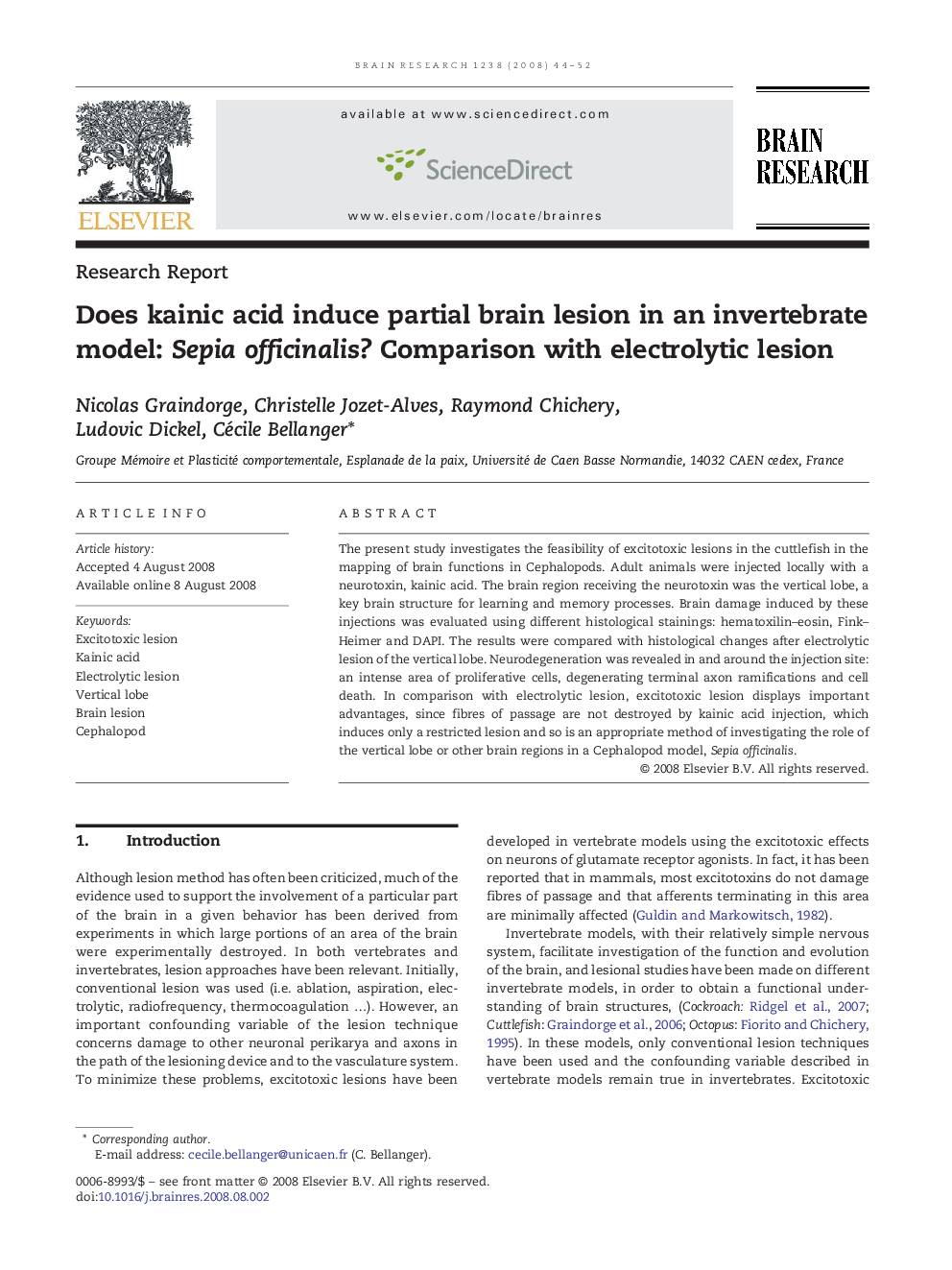| Article ID | Journal | Published Year | Pages | File Type |
|---|---|---|---|---|
| 4329200 | Brain Research | 2008 | 9 Pages |
The present study investigates the feasibility of excitotoxic lesions in the cuttlefish in the mapping of brain functions in Cephalopods. Adult animals were injected locally with a neurotoxin, kainic acid. The brain region receiving the neurotoxin was the vertical lobe, a key brain structure for learning and memory processes. Brain damage induced by these injections was evaluated using different histological stainings: hematoxilin–eosin, Fink–Heimer and DAPI. The results were compared with histological changes after electrolytic lesion of the vertical lobe. Neurodegeneration was revealed in and around the injection site: an intense area of proliferative cells, degenerating terminal axon ramifications and cell death. In comparison with electrolytic lesion, excitotoxic lesion displays important advantages, since fibres of passage are not destroyed by kainic acid injection, which induces only a restricted lesion and so is an appropriate method of investigating the role of the vertical lobe or other brain regions in a Cephalopod model, Sepia officinalis.
